
As discussed in Monday’s post, How to Accrue Frequent Flier Miles, earning and redeeming miles can be a great way to save money on your career break.
All frequent flyer mile (FFM) programs publish an awards table for the required miles needed for a flight redemption. The exact number, of course, depends on your origin and destination countries. For instance, at the time of this writing, U.S. Airways, a Star Alliance member, requires 60,000 miles to fly round trip from North America to North Asia while United Airlines, another Star Alliance airline, requires 65,000 miles for the same round trip flight.
Also, different frequent flyer mile programs group the same countries in different zones. United Airlines categorizes South Korea and Singapore in North Asia and South Asia respectively. Another frequent flyer mile program will group both countries in the same zone. It helps to check with the redemption table to where your miles can take you. Awards table changes are almost guaranteed to change for the worse, usually the required number mileage increases. It’s always best to use your miles before such changes are imposed because I rather have memories from a trip far away than looking at a black and white number on my computer screen.
Once you have the required number of FFM in your account, it’s now time to search flights for the availability of seats open to folks redeeming miles or known as award seats.
Your first inclination may be to check the airline’s website for availability. This isn’t wrong per se. It’s the easiest to do and if the airline website search satisfies your needs on the first try, you’re done. However, this will not be the case in nearly every circumstance.
Likewise with crediting miles from an alliance or partner airline, those miles can also be redeemed for flights on alliance and partner airlines. Most online booking engines don’t display the availability of partner or alliance member airlines. For instance, U.S. Airways, a Star Alliance member doesn’t display availability on Lufthansa or Austrian airline flights. To find availability on flights for U.S. Airways, you’ll have to call the airline agent to get this information and ticket it.
Routing Rules
Each frequent flyer mile program has different rules when it comes to redeeming miles – some allow you to book a one-way ticket for half the required miles for a round trip flight while others frequent flyer miles programs don’t allow it.
Travelers may miss out on travel opportunities because they are unaware of the routing rules, stopovers, and open jaw rules of their frequent flyer mile program. Most programs allow you to build in either one stop over or one open-jaw to an award ticket when you’re traveling from one zone to another, i.e. North America to Europe or North America to Asia.
A stopover is defined as a break in the middle of a journey before proceeding to your destination or origin. An example would be if a traveler wanted to travel to Bangkok, Thailand from North America, they could book NYC to Bangkok via Europe. Stopover in Europe for several weeks to several months, then proceed to their destination and return to NYC all for the same amount of miles as if the traveler booked a round trip NYC to Bangkok. A stopover can be schedule for as long as the traveler wishes, but the entire round trip itinerary has to be completed within a year.
An “Open Jaw” ticket is when you fly into one city and fly out of another. For example, let’s say a traveler booked a round trip from New York to London for X amount of miles. If the traveler wishes to tour the main continent of Europe, the traveler would then have to book a round trip flight on a budget airline to the main continent. Alternatively, for the same X amount of miles, a traveler could book an open jaw itinerary by booking a flight from NYC to London. Then book a flight from to NYC from Madrid all for the same amount of miles. All the traveler needs to book is a one-way ticket from London to Madrid versus a round trip ticket from London to Madrid on a budget airline.
Knowing these routing rules can be extremely valuable to get more travel as you would from the same amount of miles required for a round trip award ticket.
One-way tickets booked with miles don’t allow a stop over. For these cases, if it’s an international itinerary, it’s possible to include a connection of less than 24 hours in a city because a connection time of less than 24 hour doesn’t count as a stop over. It is technically considered a connection. Having 22 hours on the ground is plenty of time to leave the airport and explore the city.
For instance, traveling from Singapore to Seoul one-way, you could include a connection in Hong Kong by arriving on 15:15 flight and departing on a 13:10 flight the next day. This is a completely valid and legal connection that will not count as a stopover.
These short connections may not be conducive to career breakers traveling with children, but for those light packing travelers, it can provide an excellent way to experience a city.
With stopovers and open jaw itineraries on an award ticket, you’ll certainly make more stops along your journey, thus seeing more of the world we anxiously waited to take a career break for.
Things to Keep in Mind When Redeeming Miles
? Call the reservation agent of your airline to find availability of seats on other airlines.
? When booking an international award ticket, never ever book a round trip. Build in stopovers or an open jaw to stretch those miles.
? If you’re willing to do so and your itinerary permits, add a connection of less than 24 hours to explore a city along the way to your destination.
Mike Choi is known as the resident world traveler in his office and blogs about his travels at thefitworldtraveler.com. With his knowledge of FFM, he runs a part time frequent flyer mile consulting shop at iflywithmiles.com to help those with miles see the world. After reading books authored by Rolf Potts, Mike’s been inspired to take a career break to travel long term.




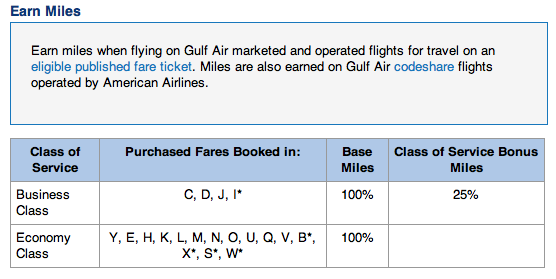
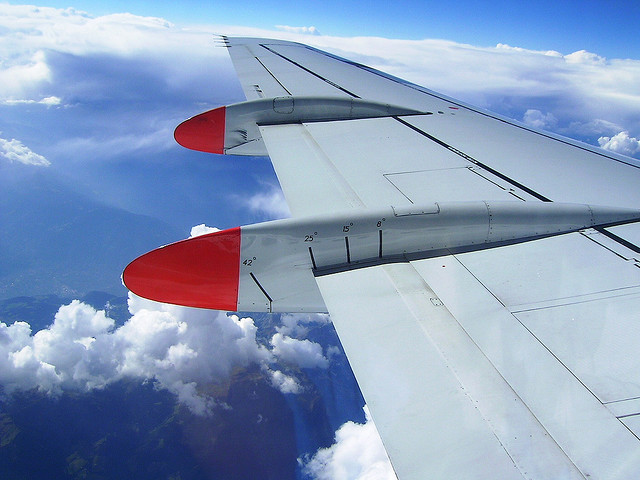
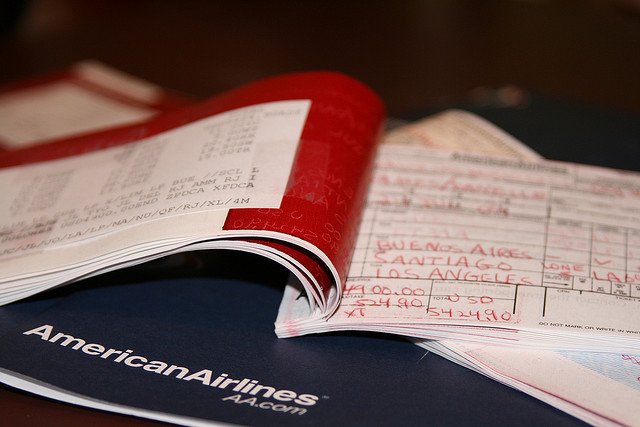
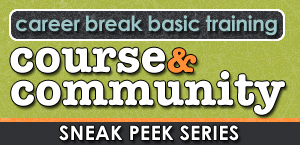
 Jannell Howell is about to embark on an around-the-world journey that will take her through many countries including Thailand, India, Jordan, and Europe before coming back to the U.S. 15 months ago, she began blogging about her preparations on her site
Jannell Howell is about to embark on an around-the-world journey that will take her through many countries including Thailand, India, Jordan, and Europe before coming back to the U.S. 15 months ago, she began blogging about her preparations on her site  The
The  Hands down, the best service I’ve used this last year is the
Hands down, the best service I’ve used this last year is the  Once I am outside the U.S., I’ll explore Mobal’s
Once I am outside the U.S., I’ll explore Mobal’s 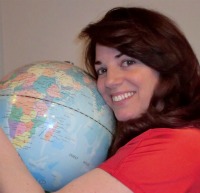 These are just a few of my favorite items. I am already so confident about these products that I signed up as an affiliate, but will thoroughly ‘test-drive’ them in the coming months and will share my experience with Meet, Plan, Go! – So ‘stay tuned’.
These are just a few of my favorite items. I am already so confident about these products that I signed up as an affiliate, but will thoroughly ‘test-drive’ them in the coming months and will share my experience with Meet, Plan, Go! – So ‘stay tuned’. Rainer Jenss was a Vice President and thirteen-year veteran of National Geographic. As the Publisher, he helped transform National Geographic Kids into the most widely read consumer magazine for children throughout the world. In the summer of 2008 he decided to put his professional expertise and personal passion to the ultimate test by traveling around the world for a year with his family.
Rainer Jenss was a Vice President and thirteen-year veteran of National Geographic. As the Publisher, he helped transform National Geographic Kids into the most widely read consumer magazine for children throughout the world. In the summer of 2008 he decided to put his professional expertise and personal passion to the ultimate test by traveling around the world for a year with his family. Shortly after hosting our Inaugural Meet, Plan, Go! event in Seattle this past September, Warren & Betsy Talbot (aka Married with Luggage) took off for their three year career break. Now with four months under their [shrinking] belts, we check in with them to see how they are adjusting to life on the road.
Shortly after hosting our Inaugural Meet, Plan, Go! event in Seattle this past September, Warren & Betsy Talbot (aka Married with Luggage) took off for their three year career break. Now with four months under their [shrinking] belts, we check in with them to see how they are adjusting to life on the road. When I first started backpacking nearly 20 years ago, I never heard about gap-years, or for that fact, career breaks. I was traveling as a college student, adding to my education by backpacking through Europe and studying in London. That experience led me to realize that I wanted to incorporate travel throughout my life – whether it was three months in SE Asia or two weeks in Ecuador.
When I first started backpacking nearly 20 years ago, I never heard about gap-years, or for that fact, career breaks. I was traveling as a college student, adding to my education by backpacking through Europe and studying in London. That experience led me to realize that I wanted to incorporate travel throughout my life – whether it was three months in SE Asia or two weeks in Ecuador. In the months leading up to her 33rd birthday, Jenny Sundel’s high-paying, but deeply unsatisfying interim job ended. After a decade of working around the clock – and sleeping next to her blackberry! – she knew she needed a break. “That only crystallized further when I attempted to find another job, right smack dab in the middle of a recession no less. ‘Knowing your background as a freelancer, are you sure you could truly be happy in an office,’ asked one interviewer. ‘Um uh um uh um uh um,’ I stammered. Needless to say, they gave the job to someone else.”
In the months leading up to her 33rd birthday, Jenny Sundel’s high-paying, but deeply unsatisfying interim job ended. After a decade of working around the clock – and sleeping next to her blackberry! – she knew she needed a break. “That only crystallized further when I attempted to find another job, right smack dab in the middle of a recession no less. ‘Knowing your background as a freelancer, are you sure you could truly be happy in an office,’ asked one interviewer. ‘Um uh um uh um uh um,’ I stammered. Needless to say, they gave the job to someone else.” My backpack had hardly touched the floor in our new apartment in Buenos Aires when I was already illuminated by the friendly glow of my netbook, searching for a school to enroll in. I was eager to hit the books after so many years in the workplace and wanted to take advantage of every second of Spanish that I could absorb. Being a little older than your typical study-abroad student and already fairly fluent, I was a bit leery of the private language mills with their revolving hung-over students. My goal wasn’t to be able to say, “I’d like a shot of tequila please”; I wanted to speak with confidence about things that probably hadn’t happened in the past, but might have—in other words, to finally master the subjunctive mood.
My backpack had hardly touched the floor in our new apartment in Buenos Aires when I was already illuminated by the friendly glow of my netbook, searching for a school to enroll in. I was eager to hit the books after so many years in the workplace and wanted to take advantage of every second of Spanish that I could absorb. Being a little older than your typical study-abroad student and already fairly fluent, I was a bit leery of the private language mills with their revolving hung-over students. My goal wasn’t to be able to say, “I’d like a shot of tequila please”; I wanted to speak with confidence about things that probably hadn’t happened in the past, but might have—in other words, to finally master the subjunctive mood. Let’s ignore the fact that you’ll never work again. Skip over the part where you die alone and penniless on a twice-flipped mattress in some dockside flophouse. Such fates are inevitable if you walk away from your job. Accept it. Move on.
Let’s ignore the fact that you’ll never work again. Skip over the part where you die alone and penniless on a twice-flipped mattress in some dockside flophouse. Such fates are inevitable if you walk away from your job. Accept it. Move on. Traveling is about the journey, and not reaching the destination; from the moment you start packing until you have returned. Think about how long you have planned to conquer this journey, and how fulfilling it is to participate in this traveling phenomenon; whether you’re a career breaker or a backpacker. Your travel experience is unique; shaped by the travelers you interact with. Shouldn’t the way you book your travel be the same?
Traveling is about the journey, and not reaching the destination; from the moment you start packing until you have returned. Think about how long you have planned to conquer this journey, and how fulfilling it is to participate in this traveling phenomenon; whether you’re a career breaker or a backpacker. Your travel experience is unique; shaped by the travelers you interact with. Shouldn’t the way you book your travel be the same?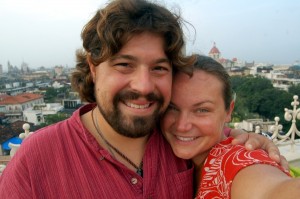 Adam Seper and his wife Megan have embraced travel throughout their decade long relationship. And after getting married, they decided that instead of pursuing the “American Dream” of buying a house and starting a family, they wanted to travel the world instead. So in October of 2008 they set off on a 358-day adventure, visiting 4 continents, 11 countries, and nearly 90 cities. Since they’ve returned, Megan is back being an attorney and Adam is pursuing a career in travel writing – including running the site World Travel for Couples.
Adam Seper and his wife Megan have embraced travel throughout their decade long relationship. And after getting married, they decided that instead of pursuing the “American Dream” of buying a house and starting a family, they wanted to travel the world instead. So in October of 2008 they set off on a 358-day adventure, visiting 4 continents, 11 countries, and nearly 90 cities. Since they’ve returned, Megan is back being an attorney and Adam is pursuing a career in travel writing – including running the site World Travel for Couples. In January of 2012, Jannell Howell will set off on a year-long journey around the world. Her plans will take her West from San Francisco where she’ll travel through Southeast Asia, meander through India and the Middle East, explore Europe and the U.K., check out Morocco, then fly to the East Coast of the U.S. where she’s looking to relocate. Aside from some basic sightseeing and unique activities (e.g. ride an elephant, learn a language, etc), she would like to try working and volunteering overseas, as well as getting to know some locals and a different way of life.
In January of 2012, Jannell Howell will set off on a year-long journey around the world. Her plans will take her West from San Francisco where she’ll travel through Southeast Asia, meander through India and the Middle East, explore Europe and the U.K., check out Morocco, then fly to the East Coast of the U.S. where she’s looking to relocate. Aside from some basic sightseeing and unique activities (e.g. ride an elephant, learn a language, etc), she would like to try working and volunteering overseas, as well as getting to know some locals and a different way of life.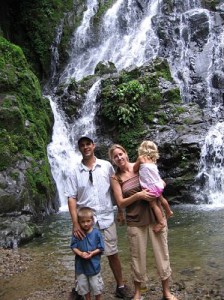 Not all career breakers dream of traveling around the world during their break away. Many prefer to utilize their time, no matter how long, based in one place, much like Abby Tegnelia did in Costa Rica. But unlike Abby, where a planned one-month stay turned into 12 months, the idea of moving abroad, even temporarily, can create some anxiety.
Not all career breakers dream of traveling around the world during their break away. Many prefer to utilize their time, no matter how long, based in one place, much like Abby Tegnelia did in Costa Rica. But unlike Abby, where a planned one-month stay turned into 12 months, the idea of moving abroad, even temporarily, can create some anxiety. Adam Pervez is no stranger to traveling. He’s been to 47 countries and has lived in six. “I am a master at hit and run travel. I arrive, run around like a madman for three days, see the museums and monuments, and leave feeling like I know the place. Yet I often don’t get a chance to talk to a local person!”
Adam Pervez is no stranger to traveling. He’s been to 47 countries and has lived in six. “I am a master at hit and run travel. I arrive, run around like a madman for three days, see the museums and monuments, and leave feeling like I know the place. Yet I often don’t get a chance to talk to a local person!” Figuring out health insurance options in the United States isn’t simple. Throw two-year round-the-world travel plans into the mix and it starts looking even uglier.
Figuring out health insurance options in the United States isn’t simple. Throw two-year round-the-world travel plans into the mix and it starts looking even uglier. As if taking a year off to travel the globe was not enough of a thrill, Jenni and I decided to give our trip a little something extra. Overachievers by nature, we wanted to use our year abroad to accomplish something meaningful.
As if taking a year off to travel the globe was not enough of a thrill, Jenni and I decided to give our trip a little something extra. Overachievers by nature, we wanted to use our year abroad to accomplish something meaningful. “I can’t wait to board the plane… I can’t wait to board the plane…”
“I can’t wait to board the plane… I can’t wait to board the plane…” How to choose the perfect backpack for long-term travel is no easy task. Dr. Sarah Johnson of the Spine Wellness Center in Las Vegas offers some key advice to help you through the process.
How to choose the perfect backpack for long-term travel is no easy task. Dr. Sarah Johnson of the Spine Wellness Center in Las Vegas offers some key advice to help you through the process. Balancing Spontaneity and Preparedness
Balancing Spontaneity and Preparedness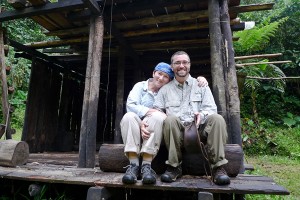 There was nothing scarier for me after the decision to travel around the world than the aspect of leaving my career.
There was nothing scarier for me after the decision to travel around the world than the aspect of leaving my career. Ranked by Chicago’s leading hotels as the number one Chicago program for preparing students for hospitality management careers (
Ranked by Chicago’s leading hotels as the number one Chicago program for preparing students for hospitality management careers (

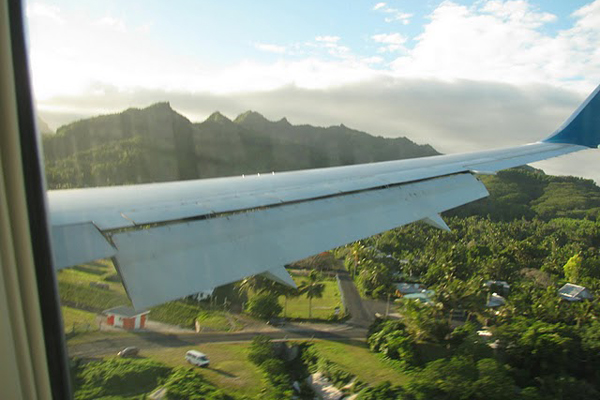

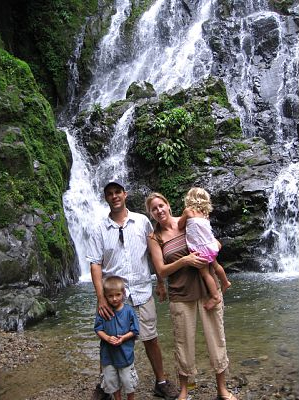 Not all career breakers dream of traveling around the world during their break away. Many prefer to utilize their time, no matter how long, based in one place, much like
Not all career breakers dream of traveling around the world during their break away. Many prefer to utilize their time, no matter how long, based in one place, much like 





